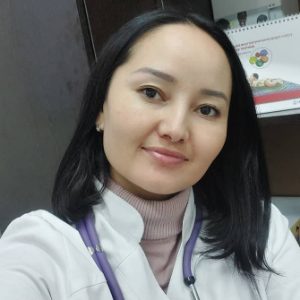Abstract:
Respiratory respiratory distress syndrome is the most severe pathology of newborns and in Kyrgyzstan is one of the main causes of stillbirth and mortality of premature newborns. It is important to identify and rank the risk factors for premature infants with RDS. Ranking of risk factors of premature infants development. It is important to identify the significance of perinatal period-specific infection in the etiostructure of premature premature infants with the most evidence-based genetic PCR method.The unification of the Silverman, Downs, AVPU and Glasgo assessment scales to determine the clinical features of the disease in children with different degrees of prematurity is relevant.It is necessary to clarify the role of inflammatory mediators, immune system and bronchophonographic data in the development, differential diagnosis, severity of the course and outcome of the disease.
The aim of research. On the basis of studying the risk factors for the development, etiopathogenetic and clinical and laboratory features of RDSN in premature infants, to expand the possibilities of optimizing preventive and therapeutic and prognostic programs.
- To assess the rank significance of medical, biological and social risk factors for the development of RDSN in premature infants.
- Identify the role of perinatal period-specific microflora in the development of RDSN in premature infants.
- To study the clinical features of RDSN depending on the degree of prematurity.
Material and methods. The prospective study was conducted in the departments of intensive care and intensive care of newborns, neonatal pathology (OPN), physiology of newborns (OPN) of the City Perinatal Center (CPC) of Bishkek. A total of 232 premature neonates were examined. 120 premature neonates with RDS and 112 premature neonates made up the control group. Social and biomedical factors, clinical and laboratory parameters were studied, and PCR and ELISA were performed to identify the etiostructure.
Audience Takeway
- The identified and ranked predictors: biomedical and social, allow us to identify a group of mothers at risk of developing SDRN in their premature infants for timely and targeted therapeutic and preventive measures.
- The established significance of specific perinatal microflora, in particular CMV, HPV 1 and 2 directs the appointment of PCR-diagnostics taking into account the time of viral replication. The role of mycoplasmas and chlamydia is not significant and does not require additional studies and sanitation measures.
- The proposed scale with the definition of the degree of DN, HR and saturation level expands the possibilities of assessing the severity of SDRN in premature infants in emergency situations.
- The dynamics of inflammatory mediators and immune status provides guidance in predicting the course and outcome of premature infants with RDS.




